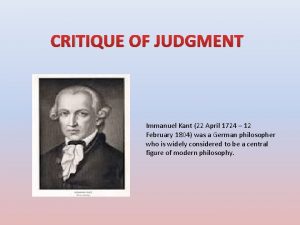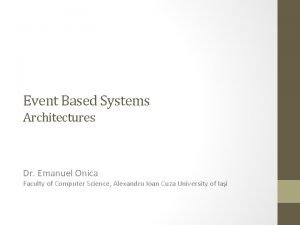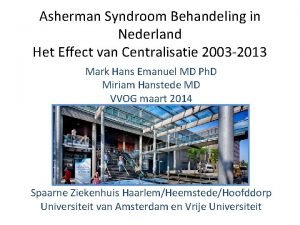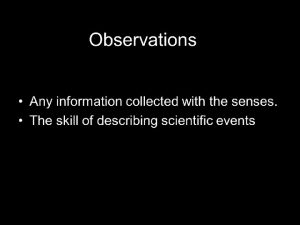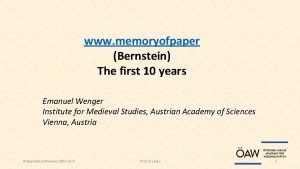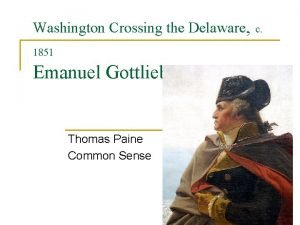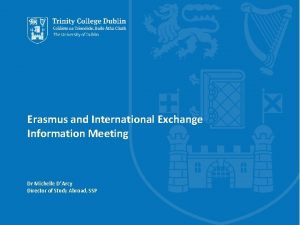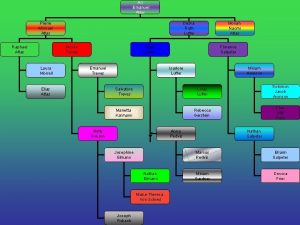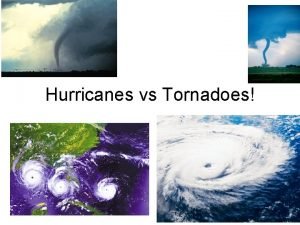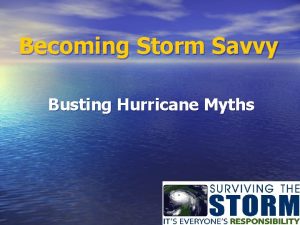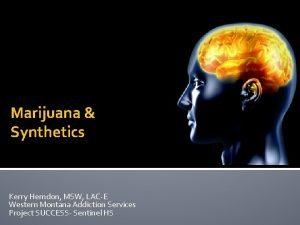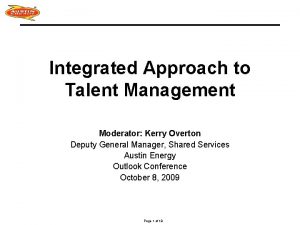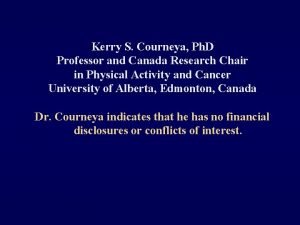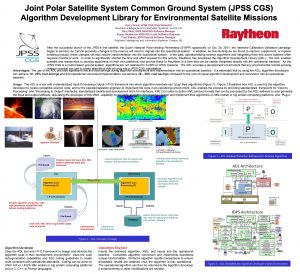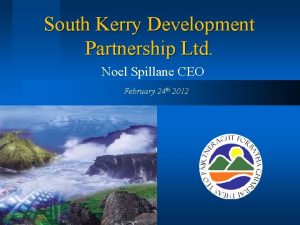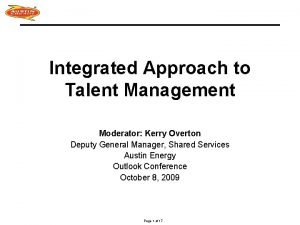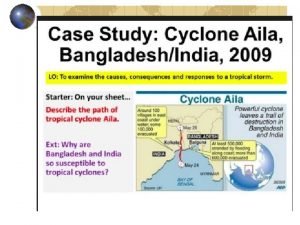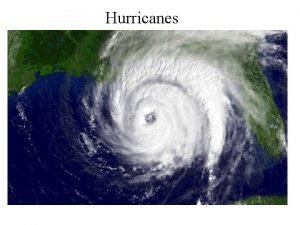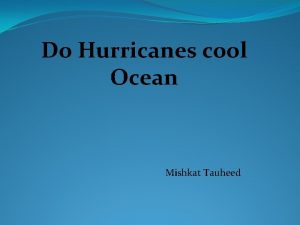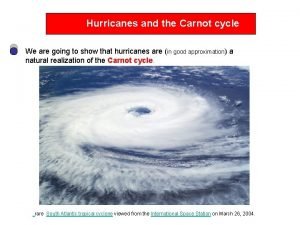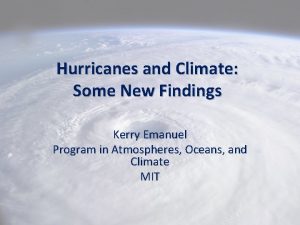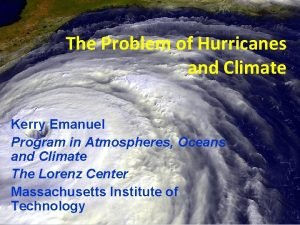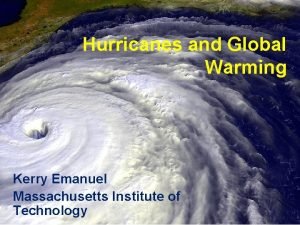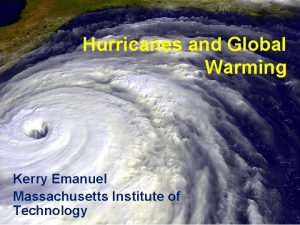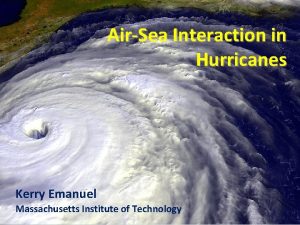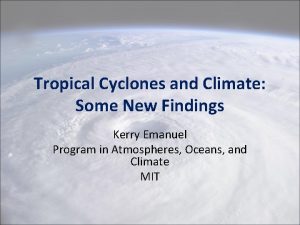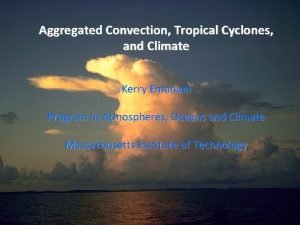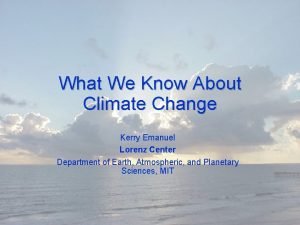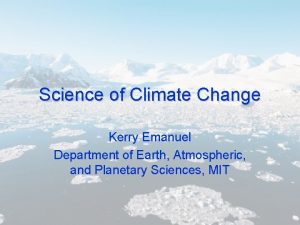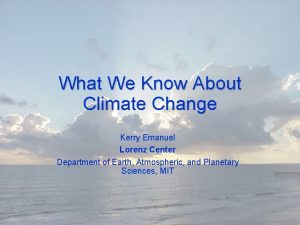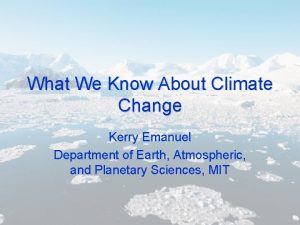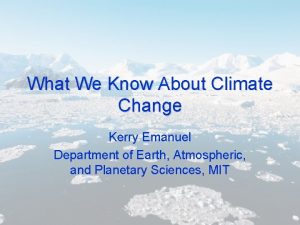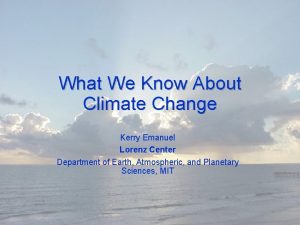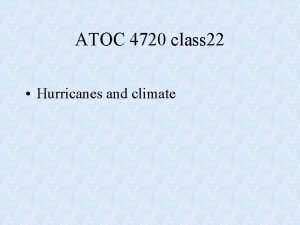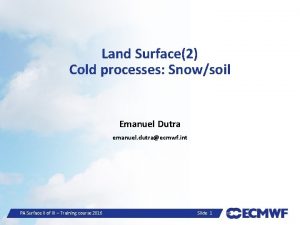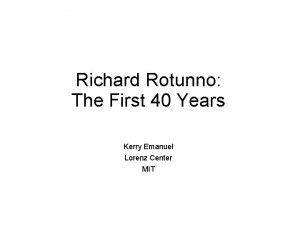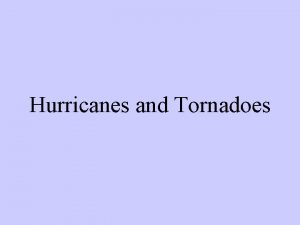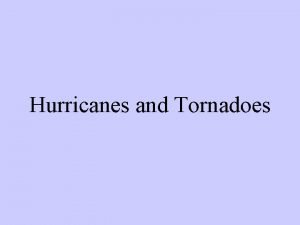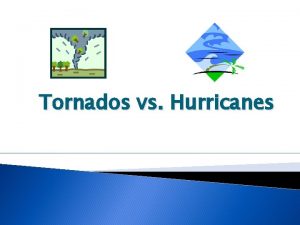Hurricanes and Climate Some New Findings Kerry Emanuel
































































- Slides: 64

Hurricanes and Climate: Some New Findings Kerry Emanuel Program in Atmospheres, Oceans, and Climate MIT

Some Issues • What processes control rates of genesis of tropical cyclones? • What processes control the actual and potential intensity of TCs? • Do TCs have important feedbacks on climate?

Some Empirical Results

Atlantic Sea Surface Temperatures and Storm Max Power Dissipation Data Sources: NOAA/TPC, UKMO/HADSST 1 Years included: 1870 -2006 Scaled Temperature Power Dissipation Index (PDI) (Smoothed with a 1 -3 -4 -3 -1 filter)

The Importance of Potential Intensity for Genesis and for Storm Intensity

Energy Production Cycle

Theoretical Upper Bound on Hurricane Maximum Wind Speed: Surface temperature Ratio of exchange coefficients of enthalpy and momentum Outflow temperature s 0* = saturation entropy of sea surface sb = actual entropy of subcloud layer Air-sea enthalpy disequilibrium

Condition of convective neutrality: sb = s* of free troposphere Also, s* of free troposphere is approximately spatially uniform (WTG approximation) approximately constant What matters, apparently, is the SST (s 0*) relative to the tropospheric temperature (s*)

Annual Maximum Potential Intensity (m/s)

Empirical Evidence for the Importance of Potential Intensity to TC Genesis: A Genesis Potential Index (GPI) Base choice of predictors on physics, intuition, past experience • • 850 h. Pa absolute vorticity (h) 850 – 250 h. Pa shear (S) Potential intensity (PI) Non-dimensional subsaturation of the middle troposphere:

Considerations in Developing a GPI: • Dimensional consistency: GPI should yield a rate per unit area • Should yield good fits to: – Spatial distribution – Basin annual rates – Annual cycle – Interannual variations – Variability of events generated by random seeding – Genesis as simulated in cloud-permitting models

New Genesis Potential Index: • • 850 h. Pa absolute vorticity (h) 850 – 250 h. Pa shear (S) Potential intensity (PI) Non-dimensional subsaturation of the middle troposphere:

Performance

Basin Frequencies

Interannual Variability No Significant Correlations Outside the Atlantic!

Climate Control of Potential Intensity Ocean Surface Energy Balance:

• Potential intensity is determined by local radiative balance, local convergence of ocean heat flux, local surface wind speed, and local outflow temperature only • Remote influences limited to remote effects on surface wind surface radiation ocean heat flux and, in marginal zones, on outflow temperature • SST cannot vary independently of free atmospheric temperature on long time scales

Interpretation of Recent Trends in Potential Intensity Based on NCAR/NCEP Reanalysis


Importance of Trends in Outflow Temperature From NCEP Reanalysis

Do AGCMs Capture Lower Stratospheric Cooling?

ECHAM AGCM forced by Hadley Centre SSTs and Sea Ice, Compared to NCEP Reanalysis

Same, but using GFDL HIRAM Model

Leads to Problems with Potential Intensities NCEP # 31: ECHAM without aerosols #32: ECHAM with aerosols

1979 -1999 Temperature Trends, 30 S-30 N. Red: Radiosondes; Solid Black: Mean of Models with Ozone; Dashed Black: Mean of Models without Ozone (Cordero and Forster, 2006)

Ozone may not explain spatial pattern of cooling (Fu and Wallace, Science, 2006)

Stratospheric Compensation

Hydrostatic Compensation (following Holloway and Neelin) Perturbations to moist adiabatic troposphere: Stratospheric compensation:

For typical values of the parameters

What is Causing Changes in Tropical Atlantic Sea Surface Temperature?

10 -year Running Average of Aug-Oct Northern Hemisphere Surface Temp and Hurricane Region Ocean Temp

Estimates of Global Mean Surface Temperature from the Instrumental Record


Tropical Atlantic SST(blue), Global Mean Surface Temperature (red), Aerosol Forcing (aqua) Global mean surface temperature Tropical Atlantic sea surface temperature Sulfate aerosol radiative forcing Mann, M. E. , and K. A. Emanuel, 2006. Atlantic hurricane trends linked to climate change. EOS, 87, 233 -244.

Best Fit Linear Combination of Global Warming and Aerosol Forcing (red) versus Tropical Atlantic SST (blue) Tropical Atlantic Sea Surface Temperature Global Surface T + Aerosol Forcing Mann, M. E. , and K. A. Emanuel, 2006. Atlantic hurricane trends linked to climate change. EOS, 87, 233 -244.

Inferences from the Geological Record: Paleotempestology

barrier beach Paleotempestology backbarrier marsh a) upland overwash fan lagoon barrier beach upland overwash fan b) backbarrier marsh lagoon terminal lobes flood tidal delta Source: Jeff Donnelly, WHOI

Source: Jeff Donnelly, Jon Woodruff, Phil Lane; WHOI

Source: Jeff Donnelly, Jon Woodruff, Phil Lane; WHOI

Inferences from Modeling

The Problem: • Global models are far too coarse to simulate high intensity tropical cyclones • Embedding regional models within global models introduces problems stemming from incompatibility of models, and even regional models are usually too coarse

Histograms of Tropical Cyclone Intensity as Simulated by a Global Model with 50 km grid point spacing. (Courtesy Isaac Held, GFDL) Category 3

Probability Density of TC Damage, U. S. East Coast Damage Multiplied by Probability Density of TC Damage, U. S. East Coast

To the extent that they simulate tropical cyclones at all, global models simulate storms that are largely irrelevant to society and to the climate system itself, given that ocean stirring effects are heavily weighted towards the most intense storms

Our Approach (More on this tomorrow!) • Step 1: Seed each ocean basin with a very large number of weak, randomly located vortices • Step 2: Vortices are assumed to move with the large scale atmospheric flow in which they are embedded • Step 3: Run a coupled, ocean-atmosphere computer model for each vortex, and note how many achieve at least tropical storm strength; discard others • Step 4: Using the small fraction of surviving events, determine storm statistics.

200 Synthetic U. S. Landfalling tracks (color coded by Saffir-Simpson Scale)

Year by Year Comparison with Best Track and with Knutson et al. , 2007

Decomposition of PDI Trends

Sensitivity to Shear and Potential Intensity

Downscaling ECHAM 5 AGCM (T 42), 1870 -2005 (with Martin Wild and Doris Folini)

Power Dissipation Downscaled Using ECHAM 5 and GFDL AM 2. 1 Compared to Best Track

Reminder: Problems with Potential Intensities NCEP # 31: ECHAM without aerosols #32: ECHAM with aerosols

Feedback of Global Tropical Cyclone Activity on the Climate System

The wake of Hurricane Emily (July 2005) Sea Surface Temperature in the Wakes of Hurricanes Hurricane Dennis (one week earlier) Source: Rob Korty, Cal. Tech

Direct mixing by tropical cyclones Emanuel (2001) estimated global rate of heat input as 1. 4 X 1015 Watts Source: Rob Korty, Cal. Tech

TC Mixing May Induce Much or Most of the Observed Poleward Heat Flux by the Oceans

Estimate of total heat uptake by tropical oceans Estimate from satellite-derived wake recoveries Extrapolation from detailed ocean measurements of one storm


TC-Mixing may be Crucial for High-Latitude Warmth and Low-Latitude Moderation During Warm Climates, such as that of the Eocene

Summary • Potential intensity is an important (but not the only) control on tropical cyclone activity, including frequency and intensity • On time scales long enough for the ocean mixed layer to be in thermal equilibrium, potential intensity is controlled largely by surface radiation, surface wind speed, ocean heat fluxes, and outflow temperature

• Recent large, upward trends in potential intensity are partly attributable to cooling of the lower stratosphere • Models forced with observed SSTs not very successful in capturing this cooling

• Simple but high resolution coupled TC model can be used to ‘downscale” TC activity from global climate data sets • Studies based on this downscaling suggest large sensitivity of TCs to climate state, and possibly important role for TC-induced ocean mixing in regulating climate

Depiction of central North America, ~60 million years ago Our future? Figure courtesy of Rob Korty, Cal. Tech

Linear trend (1955– 2003) of the zonally integrated heat content of the world ocean by one-degree latitude belts for 100 -m thick layers. Source: Levitus et al. , 2005 TC-Mixing may explain difference between observed and modeled ocean warming Zonally averaged temperature trend due to global warming in a coupled climate model. Source: Manabe et al, 1991
 Climate change 2014 mitigation of climate change
Climate change 2014 mitigation of climate change Venn diagram of typhoon and tornado
Venn diagram of typhoon and tornado What is compare and contrast text structure
What is compare and contrast text structure Emanuel kanti
Emanuel kanti Liceul teologic baptist emanuel
Liceul teologic baptist emanuel Emanuel socaciu
Emanuel socaciu Elektro emanuel
Elektro emanuel Emanuel dohi
Emanuel dohi Rebekah emanuel
Rebekah emanuel Emanuel onica
Emanuel onica Emanuel syndrome
Emanuel syndrome 1806 valentin ross
1806 valentin ross Emanuel leutze westward the course of empire
Emanuel leutze westward the course of empire Egg för emanuel
Egg för emanuel The palace museum
The palace museum Emanuel leutze
Emanuel leutze Emanuel lehman
Emanuel lehman Handlungskompetenzorientierung
Handlungskompetenzorientierung Emanuel timoni
Emanuel timoni Separacion entre viguetas
Separacion entre viguetas Emanuel kittl
Emanuel kittl Evanyely significado
Evanyely significado Dr michelle remmes
Dr michelle remmes Emanuel komnen
Emanuel komnen Rebecca gerstein
Rebecca gerstein Hurricanes and tornadoes similarities
Hurricanes and tornadoes similarities Hurricanes myths and facts
Hurricanes myths and facts Contact vs noncontact forces
Contact vs noncontact forces Some may trust in horses
Some may trust in horses 13 colonies religion chart
13 colonies religion chart Dr kerry watrin
Dr kerry watrin Martin seligman kerry mueller
Martin seligman kerry mueller Herndon montana
Herndon montana Kerry voss
Kerry voss Kerry overton
Kerry overton Kerry litzenberg
Kerry litzenberg Kerry zhu
Kerry zhu Gmail
Gmail Supervision and appraisal
Supervision and appraisal Kerry pinny
Kerry pinny Dr kerry watrin
Dr kerry watrin Martin seligman kerry mueller
Martin seligman kerry mueller Kerry renee pack
Kerry renee pack Mass of p
Mass of p Kerry zhu
Kerry zhu Colin powell mbti
Colin powell mbti Total maintenance services
Total maintenance services Kerry phifer
Kerry phifer Kerry pierce
Kerry pierce Kerry grant
Kerry grant Zhu
Zhu Kerry kingham
Kerry kingham South kerry development partnership
South kerry development partnership Ae talent management
Ae talent management Kerry mohan
Kerry mohan Kerry tavakoli
Kerry tavakoli Gmail
Gmail The global distribution of tropical storms
The global distribution of tropical storms How are hurricanes categorized
How are hurricanes categorized Hurricanes definition
Hurricanes definition Streamlines on a weather map depict
Streamlines on a weather map depict Do hurricanes cool the ocean
Do hurricanes cool the ocean Thermodynamics of hurricanes
Thermodynamics of hurricanes Hurricanes tropical storms
Hurricanes tropical storms Why do hurricanes lose strength over land
Why do hurricanes lose strength over land



